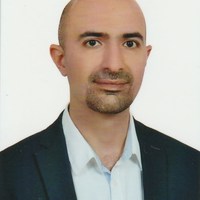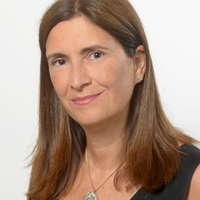papers by Carla Garbarino

I musei scientifici nell’anno europeo del patrimonio, 2019
RIASSUNTO Per ricordare, nel centenario della morte, Carlo Forlanini (1847-1918), che ideò il pr... more RIASSUNTO Per ricordare, nel centenario della morte, Carlo Forlanini (1847-1918), che ideò il primo metodo di cura realmente efficace della tubercolosi, è stata allestita a Pavia una mostra tesa a inquadrare la figura del grande clinico in una storia della malattia raccontata in chiave multidisciplinare. Conferenze legate alla mostra hanno permesso di approfondire temi storico-letterari e di attualità scientifica. ABSTRACT Violetta’s disease. The historical-medical heritage used as a starting point to talk about current issues To remember, a hundred years after his death, Carlo Forlanini (1847-1918), who conceived the first truly effective method of treating tuberculosis, an exhibition was set up in Pavia, aimed at framing the figure of the great clinician in an history of the disease told in a multidisciplinary way. Conferences related to the exhibition allowed to deepen historical-literary and scientific current topics.
L’accessibilità nei musei. Limiti, risorse e strategie, 2020

World Neurosurgery, 2021
Nearly 250 years ago, Antonio Scarpa became a professor of anatomy and surgery only 2 years after... more Nearly 250 years ago, Antonio Scarpa became a professor of anatomy and surgery only 2 years after he graduated from the University of Padua. The young lecturer soon became one of the most renowned anatomists in Italy and a director of the Faculty of Medicine at the University of Pavia. He worked in the fields of general surgery and ophthalmology. Several anatomic structures have been named after him, mainly Scarpa's fascia and Scarpa's triangle. His interest in neuroanatomy was ardent, despite being occasionally neglected. Scarpa's contributions to the fields of neurosciences have been significant. He was the first to describe the round window and the secondary tympanic membrane, and he eventually focused on the auditory and olfactory organs. Notably, the vestibular ganglion is now known as Scarpa's ganglion. Scarpa's magnum opus was the book Tabulae Neurologicae, in which he described the path of several cranial nerves, including the vagus nerve, and the innervation of the heart. Since his death in 1832, Scarpa's head has been preserved at the University History Museum of the University of Pavia. In this historical vignette, we aim to describe Antonio Scarpa's troubled life and brilliant career, focusing on his core contributions to neuroanatomy, neurosurgery, and otoneurosurgery.

Science & Education, 2021
The Pavia University History Museum, which houses historic items mainly connected to the physics ... more The Pavia University History Museum, which houses historic items mainly connected to the physics and medicine fields, has focused in the past years on new ways to involve its public and to attract new audiences. Among different approaches, digital technologies have proven important to both external and internal communication. Lately, an Augmented Reality application has been made available to visitors, offering in one tool multimedia material of a historical-scientific nature: stories, 3D animations, images and user-generated video storytelling (developed mainly by University students, one of our least present demographics before the App, and younger students, who typically participate in the annual co-creative project). The App was designed to be as non-intrusive and discreet as possible, to preserve the historic ambiance of the museum, to unite social and educational aspects, to register user behaviour and to make the museum experience more vibrant and active and therefore captiva...
In the centennial anniversary of the death of the Italian pathologist, an- thropologist and write... more In the centennial anniversary of the death of the Italian pathologist, an- thropologist and writer Paolo Mantegazza (1910), the University of Pavia planned a commemorative exhibition to show the versatile aspects of his scientific and literary ac- tivity. In the course of the research to prepare the exposition, a strange cheratinic horn was found at t he Museum for the History of the University of Pavia labeled as 'spur of a cock transplanted into an ear of a cow'. At the end of some historical investigation, we found that this strange object was at the centre of a scientific correspondence be- tween Mantegazza and Charles Darwin, who made reference to it in his book The Vari- ation of Animals and Plants under Domestication.

The participation and subsequent funding by the Ministry of Education, Universities and Research ... more The participation and subsequent funding by the Ministry of Education, Universities and Research (MIUR), of the project enabled the University of Pavia’s Museum System, together with a number of infant, primary and secondary schools, to carry out various activities. The project “Time and Science” is one of many which, nearly since 2005, has variously engaged some of Pavia University’s museums, the Department of Physics and a number of local educational institutions from schools to the university. Many of its characteristics have been retained this year too the active involvement of museum staff, teachers and students, workshops and production activities, the wide use of the history of science and art history, the use of analogical reasoning, both within individual subjects and among subjects, as well as the attempt to create close ties between formal and informal education. The new elements of this project concerned work-related training and the participation of museums which had pr...

Nota presentata dal m.e. Paolo Mazzarello (Adunanza del 27 giugno 2013) SUNTO.-Durante l'alle... more Nota presentata dal m.e. Paolo Mazzarello (Adunanza del 27 giugno 2013) SUNTO.-Durante l'allestimento, curato dall'Università di Pavia, di una mostra or-ganizzata nel centenario della morte di Paolo Mantegazza (1910), nel Museo per la Storia dell'Università e stato trovato uno strano corno cheratinico, accompagnato da un cartellino che lo identificava come "innesto di sperone di gallo sull'orecchio di una vacca". Dopo alcune ricerche storiche abbiamo scoperto che questo strano og-getto fu al centro di una corrispondenza scientifica tra Mantegazza e Charles Darwin, che fece riferimento al preparato nel suo libro The Variation of Animals and Plants under Domestication. *** ABSTRACT.-In the centennial anniversary of the death of the Italian pathologist, anthropologist and writer Paolo Mantegazza (1910), the University of Pavia planned a commemorative exhibition to show the versatile aspects of his scientific and literary activity. In the course of the research...









Uploads
papers by Carla Garbarino